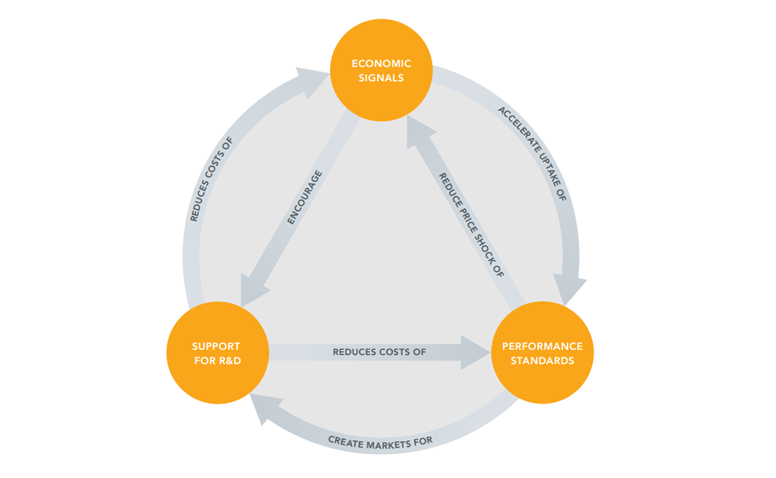On October 6th, Energy Innovation CEO Hal Harvey gave a presentation on energy policy at the Oxford Martin School. The presentation, “How to design policies that can save the planet,” discusses the differences between good and bad policy, delving into detail about the ways to design and implement policy that is feasible, effective, and affordable.
Hal summarizes three types of policy
1) Economic signals, such as a carbon tax
2) Performance standards, such as fuel economy standards
3) Support for R&D, such as federal grants
Each of these policies can be implemented to build off one another and further maximize their impact. For example, a tax on fuel accelerates the uptake of fuel economy standards for cars, while also encouraging support for R&D to explore more efficient car technologies and low- or non-carbon fuel options.

Hal continues with a description of six principles for designing smart energy policy, which are inspired from ClimateWorks’ report, “Policies That Work.”
a) Set clear policy goals, and let the market find the best solutions
b) Require continuous improvements, with consistent and predictable performance increments
c) Go ‘upstream’ to capture 100 percent of the market
d) Facilitate private sector innovation and investment
e) Reward performance – not investment – and avoid unintended consequences
f) Influence investment in new infrastructure when it is first designed and constructed, rather than wait to retrofit or replace it
Hal’s presentation concludes with examples of how these six policy design principles can be applied to the transportation sector. Standards and price signals can create a cleaner, more efficient vehicle fleet, as well as shift consumers toward alternative, lower-carbon transportation options. The strongest transportation policies include vehicle performance standards, fuel and vehicle levies, and smart urban design. Top policies in other economic sectors and throughout the economy include feed-in tariffs, renewable portfolio standards, energy efficiency standards and labels, energy efficiency programs, and support for R&D and innovation.
